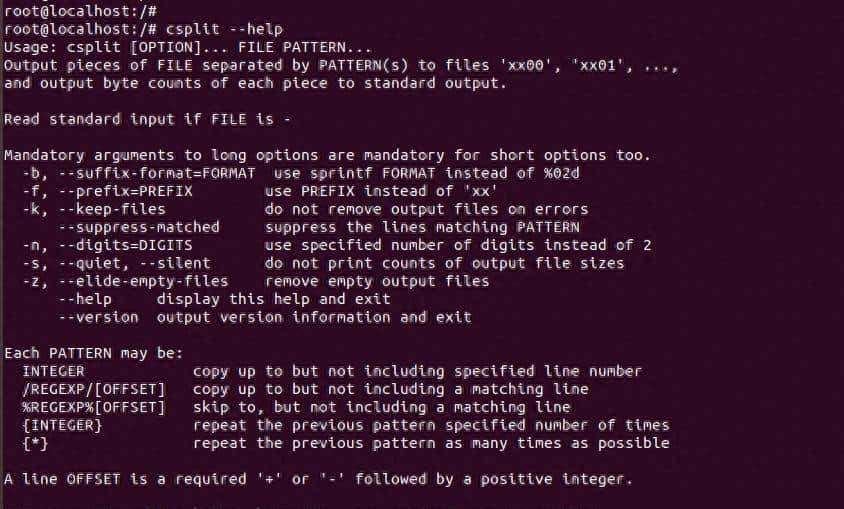探索Python标准库中那些不为人知但功能强大的模块,提升开发效率而不增加依赖
引言
Python以其”内置电池“(batteries included)理念而闻名,提供了丰富而强大的标准库。然而,大多数开发者只熟悉其中一小部分常用模块(如os、sys、json等),而忽略了标准库中许多隐藏的珍宝。
这些冷门但实用的标准库模块能够帮助你解决各种编程问题,无需安装任何第三方包。本文将带你探索Python标准库中那些不为人知但功能强大的模块,帮助你提升开发效率,减少外部依赖。
一、functools:高阶函数与函数式编程工具
functools
1.1 @lru_cache:智能缓存优化性能
@lru_cache
import functools
import time
# 不使用缓存
def fibonacci(n):
if n < 2:
return n
return fibonacci(n - 1) + fibonacci(n - 2)
# 使用lru_cache缓存
@functools.lru_cache(maxsize=128)
def fibonacci_cached(n):
if n < 2:
return n
return fibonacci_cached(n - 1) + fibonacci_cached(n - 2)
# 性能测试
start_time = time.time()
result1 = fibonacci(30)
end_time = time.time()
print(f"无缓存版本: {result1}, 耗时: {end_time - start_time:.4f}秒")
start_time = time.time()
result2 = fibonacci_cached(30)
end_time = time.time()
print(f"有缓存版本: {result2}, 耗时: {end_time - start_time:.4f}秒")
# 清除缓存
fibonacci_cached.cache_clear()
# 查看缓存统计
print(f"缓存命中: {fibonacci_cached.cache_info().hits}")
print(f"缓存未命中: {fibonacci_cached.cache_info().misses}")1.2 @singledispatch:函数重载支持
@singledispatch
import functools
@functools.singledispatch
def process_data(data):
"""默认处理函数"""
raise NotImplementedError("未支持的数据类型")
@process_data.register
def _(data: str):
"""处理字符串数据"""
print(f"处理字符串: {data}")
return data.upper()
@process_data.register
def _(data: list):
"""处理列表数据"""
print(f"处理列表,长度: {len(data)}")
return sum(data)
@process_data.register
def _(data: dict):
"""处理字典数据"""
print(f"处理字典,键: {list(data.keys())}")
return {k: v * 2 for k, v in data.items()}
# 测试不同类型的数据
print(process_data("hello")) # 处理字符串
print(process_data([1, 2, 3, 4])) # 处理列表
print(process_data({"a": 1, "b": 2})) # 处理字典1.3 partial:部分函数应用
partial
import functools
# 原始函数
def power(base, exponent):
return base ** exponent
# 创建新函数
square = functools.partial(power, exponent=2)
cube = functools.partial(power, exponent=3)
print(f"5的平方: {square(5)}") # 25
print(f"5的立方: {cube(5)}") # 125
# 更复杂的例子
def send_request(url, method="GET", timeout=30, headers=None):
"""模拟发送HTTP请求"""
print(f"向 {url} 发送 {method} 请求")
print(f"超时: {timeout}秒")
print(f"头部: {headers or {}}")
return {"status": "success"}
# 创建特定配置的请求函数
send_get = functools.partial(send_request, method="GET", timeout=10)
send_post = functools.partial(send_request, method="POST", timeout=60)
# 使用新函数
send_get("https://api.example.com/data")
send_post("https://api.example.com/submit",
headers={"Content-Type": "application/json"})二、itertools:迭代器工具集
itertools
2.1 无限迭代器
import itertools
# 无限计数器
counter = itertools.count(start=10, step=2)
print("计数器示例:")
for i in range(5):
print(next(counter)) # 10, 12, 14, 16, 18
# 无限循环
cycle = itertools.cycle(["A", "B", "C"])
print("循环示例:")
for i in range(6):
print(next(cycle)) # A, B, C, A, B, C
# 重复元素
repeater = itertools.repeat("Hello", times=3)
print("重复示例:")
for item in repeater:
print(item) # Hello, Hello, Hello2.2 组合迭代器
import itertools
# 排列
print("排列:")
for p in itertools.permutations("ABC", 2):
print(p) # AB, AC, BA, BC, CA, CB
# 组合
print("组合:")
for c in itertools.combinations("ABC", 2):
print(c) # AB, AC, BC
# 笛卡尔积
print("笛卡尔积:")
for p in itertools.product([1, 2], ["A", "B"]):
print(p) # (1, A), (1, B), (2, A), (2, B)2.3 高级迭代操作
import itertools
# 链式迭代
chain = itertools.chain([1, 2, 3], "ABC", (4.0, 5.0))
print("链式迭代:")
for item in chain:
print(item) # 1, 2, 3, A, B, C, 4.0, 5.0
# 压缩迭代器(根据选择器选择元素)
compress = itertools.compress("ABCDEF", [1, 0, 1, 0, 1, 1])
print("压缩迭代:")
for item in compress:
print(item) # A, C, E, F
# 分组操作
data = sorted([("A", 1), ("B", 2), ("A", 3), ("B", 4)], key=lambda x: x[0])
print("分组操作:")
for key, group in itertools.groupby(data, key=lambda x: x[0]):
print(f"{key}: {list(group)}")
# 滑动窗口(Python 3.10+)
data = [1, 2, 3, 4, 5]
print("滑动窗口:")
for pair in itertools.pairwise(data):
print(pair) # (1, 2), (2, 3), (3, 4), (4, 5)三、contextlib:上下文管理工具
contextlib
with
3.1 @contextmanager:简化上下文管理器创建
import contextlib
import time
@contextlib.contextmanager
def timer_context(name="操作"):
"""计时上下文管理器"""
start_time = time.time()
try:
yield
finally:
end_time = time.time()
print(f"{name} 耗时: {end_time - start_time:.4f}秒")
@contextlib.contextmanager
def suppress_exceptions(*exception_types):
"""抑制指定类型异常的上下文管理器"""
try:
yield
except exception_types as e:
print(f"抑制异常: {type(e).__name__}: {e}")
# 使用示例
with timer_context("数据处理"):
with suppress_exceptions(ValueError, TypeError):
# 这里的异常会被抑制
int("不是数字") # 这会引发ValueError,但会被抑制
print("程序继续执行")3.2 ExitStack:管理多个上下文
ExitStack
import contextlib
def process_files(file_paths):
"""处理多个文件,自动管理资源"""
with contextlib.ExitStack() as stack:
files = [stack.enter_context(open(path, 'r')) for path in file_paths]
contents = [file.read() for file in files]
return contents
# 更复杂的例子
def complex_operation():
"""需要管理多个资源的复杂操作"""
with contextlib.ExitStack() as stack:
# 动态添加上下文管理器
file1 = stack.enter_context(open('file1.txt', 'w'))
file2 = stack.enter_context(open('file2.txt', 'w'))
# 添加其他类型的上下文管理器
timer = stack.enter_context(timer_context("文件操作"))
# 执行操作
file1.write("Hello ")
file2.write("World!")
print("操作完成")
# 所有资源都会自动清理
# 处理可能不存在的资源
def safe_open(file_path):
"""安全地打开文件,如果文件不存在则跳过"""
with contextlib.ExitStack() as stack:
try:
file = stack.enter_context(open(file_path, 'r'))
content = file.read()
return content
except FileNotFoundError:
print(f"文件 {file_path} 不存在,跳过")
return None3.3 其他实用上下文工具
import contextlib
import os
# 临时更改当前工作目录
@contextlib.contextmanager
def temporary_cd(path):
"""临时更改工作目录"""
old_cwd = os.getcwd()
os.chdir(path)
try:
yield
finally:
os.chdir(old_cwd)
# 使用示例
print(f"当前目录: {os.getcwd()}")
with temporary_cd("/tmp"):
print(f"临时目录: {os.getcwd()}")
print(f"恢复后的目录: {os.getcwd()}")
# 重定向标准输出
@contextlib.contextmanager
def redirect_stdout(new_target):
"""重定向标准输出"""
old_stdout = sys.stdout
sys.stdout = new_target
try:
yield
finally:
sys.stdout = old_stdout
# 使用示例
import io
import sys
output = io.StringIO()
with redirect_stdout(output):
print("这条消息不会显示在控制台")
print("而是被重定向到StringIO")
print("恢复标准输出")
print(f"捕获的输出: {output.getvalue()}")四、pathlib:面向对象的文件系统路径
pathlib
4.1 基本路径操作
from pathlib import Path
# 创建路径对象
current_dir = Path.cwd()
home_dir = Path.home()
config_path = Path("/etc") / "app" / "config.ini" # 使用/操作符拼接路径
print(f"当前目录: {current_dir}")
print(f"家目录: {home_dir}")
print(f"配置路径: {config_path}")
# 路径属性
print(f"路径名称: {config_path.name}")
print(f"路径主干: {config_path.stem}")
print(f"后缀: {config_path.suffix}")
print(f"父目录: {config_path.parent}")
print(f"绝对路径: {config_path.absolute()}")
# 路径检查
print(f"是否存在: {config_path.exists()}")
print(f"是文件: {config_path.is_file()}")
print(f"是目录: {config_path.is_dir()}")4.2 文件系统操作
from pathlib import Path
import shutil
# 创建目录
new_dir = Path("test_directory")
new_dir.mkdir(exist_ok=True)
# 创建文件
test_file = new_dir / "test.txt"
test_file.write_text("Hello, Pathlib!")
# 读取文件
content = test_file.read_text()
print(f"文件内容: {content}")
# 遍历目录
print("目录内容:")
for item in new_dir.iterdir():
print(f" {item.name} - {'目录' if item.is_dir() else '文件'}")
# 模式匹配
print("所有txt文件:")
for txt_file in new_dir.glob("*.txt"):
print(f" {txt_file}")
print("递归查找所有文件:")
for file in new_dir.rglob("*"):
print(f" {file}")
# 文件操作
new_file = new_dir / "new_file.txt"
test_file.rename(new_file) # 重命名
print(f"重命名后: {new_file.exists()}")
# 清理
shutil.rmtree(new_dir)五、collections:更多数据结构工具
除了常用的
defaultdict
namedtuple
collections
5.1 Counter:计数工具
from collections import Counter
# 基本计数
words = ["apple", "banana", "apple", "orange", "banana", "apple"]
word_count = Counter(words)
print(f"单词计数: {word_count}")
# 更新计数
word_count.update(["apple", "kiwi"])
print(f"更新后计数: {word_count}")
# 最常见元素
print(f"最常见的2个: {word_count.most_common(2)}")
# 数学运算
counter1 = Counter(a=3, b=1, c=2)
counter2 = Counter(a=1, b=2, c=3)
print(f"加法: {counter1 + counter2}")
print(f"减法: {counter1 - counter2}")
print(f"交集: {counter1 & counter2}")
print(f"并集: {counter1 | counter2}")5.2 deque:双端队列
from collections import deque
# 创建双端队列
d = deque([1, 2, 3, 4, 5])
print(f"初始队列: {d}")
# 添加元素
d.append(6) # 右侧添加
d.appendleft(0) # 左侧添加
print(f"添加后: {d}")
# 弹出元素
right_item = d.pop() # 右侧弹出
left_item = d.popleft() # 左侧弹出
print(f"弹出: {left_item}, {right_item}")
print(f"剩余队列: {d}")
# 旋转队列
d.rotate(2) # 向右旋转2位
print(f"旋转后: {d}")
d.rotate(-2) # 向左旋转2位
print(f"反向旋转后: {d}")
# 限制队列大小
limited_d = deque(maxlen=3)
for i in range(5):
limited_d.append(i)
print(f"添加{i}后: {limited_d}") # 自动移除最早的元素5.3 ChainMap:合并多个映射
from collections import ChainMap
# 创建多个字典
defaults = {"theme": "light", "language": "en", "font_size": 12}
user_prefs = {"theme": "dark", "font_size": 14}
session_settings = {"language": "zh", "timeout": 30}
# 创建链式映射
config = ChainMap(session_settings, user_prefs, defaults)
# 访问数据(按顺序查找)
print(f"主题: {config['theme']}") # 来自user_prefs
print(f"语言: {config['language']}") # 来自session_settings
print(f"字体大小: {config['font_size']}") # 来自user_prefs
print(f"超时: {config['timeout']}") # 来自session_settings
# 更新数据(只影响第一个映射)
config["theme"] = "high-contrast"
print(f"更新后主题: {user_prefs['theme']}") # high-contrast
# 添加新映射
new_settings = {"font_size": 16, "animations": True}
config = config.new_child(new_settings)
print(f"新字体大小: {config['font_size']}") # 16
# 迭代键值
print("所有设置:")
for key, value in config.items():
print(f" {key}: {value}")六、其他有用的冷门模块
6.1 statistics:统计计算
import statistics
data = [1, 2, 3, 4, 5, 6, 7, 8, 9, 10]
# 基本统计量
print(f"均值: {statistics.mean(data)}")
print(f"中位数: {statistics.median(data)}")
print(f"众数: {statistics.mode([1, 2, 2, 3, 3, 3])}")
print(f"标准差: {statistics.stdev(data)}")
print(f"方差: {statistics.variance(data)}")
# 高级统计量
print(f"分位数: {statistics.quantiles(data, n=4)}") # 四分位数
print(f"协方差: {statistics.covariance(data, [x*2 for x in data])}")
print(f"相关系数: {statistics.correlation(data, [x*2 for x in data])}")
# 处理异常值
data_with_outlier = data + [1000]
print(f"带异常值的均值: {statistics.mean(data_with_outlier)}")
print(f"截断均值: {statistics.mean(data_with_outlier, trimmed=0.1)}") # 去掉10%的极端值6.2 zoneinfo:时区处理(Python 3.9+)
from zoneinfo import ZoneInfo
from datetime import datetime, timedelta
# 创建时区感知的datetime对象
dt = datetime(2023, 12, 25, 15, 30, tzinfo=ZoneInfo("America/New_York"))
print(f"纽约时间: {dt}")
# 时区转换
dt_utc = dt.astimezone(ZoneInfo("UTC"))
print(f"UTC时间: {dt_utc}")
dt_shanghai = dt.astimezone(ZoneInfo("Asia/Shanghai"))
print(f"上海时间: {dt_shanghai}")
# 处理夏令时
# 纽约在2023年3月12日进入夏令时
before_dst = datetime(2023, 3, 12, 1, 59, tzinfo=ZoneInfo("America/New_York"))
after_dst = before_dst + timedelta(minutes=2)
print(f"夏令时前: {before_dst}")
print(f"夏令时后: {after_dst}") # 时间跳变
# 所有可用时区
all_zones = ZoneInfo.available_timezones()
print(f"可用时区数量: {len(all_zones)}")
print(f"示例时区: {sorted(all_zones)[:5]}")6.3 graphlib:图论算法(Python 3.9+)
import graphlib
from graphlib import TopologicalSorter
# 创建拓扑排序器
graph = {
"穿袜子": ["穿鞋"],
"穿内裤": ["穿裤子"],
"穿裤子": ["穿鞋", "系腰带"],
"穿衬衫": ["系领带", "穿外套"],
"系领带": ["穿外套"],
"穿外套": [],
"穿鞋": [],
"系腰带": []
}
ts = TopologicalSorter(graph)
# 静态排序
print("拓扑排序(静态):")
try:
order = list(ts.static_order())
for task in order:
print(f" {task}")
except graphlib.CycleError as e:
print(f"图中存在循环依赖: {e}")
# 动态排序
print("拓扑排序(动态):")
ts = TopologicalSorter(graph)
ts.prepare()
while ts.is_active():
nodes = ts.get_ready()
print(f"可执行任务: {nodes}")
ts.done(nodes) # 标记任务完成总结与对比
为了帮助你更好地了解这些标准库模块的特性,下面是一个功能对比表:
| 模块名称 | 主要用途 | 优点 | 适用场景 |
|---|---|---|---|
| functools | 高阶函数操作 | 函数缓存、函数重载、部分应用 | 性能优化、函数式编程 |
| itertools | 迭代器操作 | 内存高效、组合迭代、无限迭代 | 数据处理、算法实现 |
| contextlib | 上下文管理 | 简化上下文创建、多资源管理 | 资源管理、异常处理 |
| pathlib | 面向对象路径操作 | 直观API、链式操作、跨平台 | 文件系统操作 |
| collections | 高级数据结构 | 丰富数据结构、高效操作 | 数据计数、队列、映射合并 |
| statistics | 统计计算 | 多种统计量、异常值处理 | 数据分析、统计计算 |
| zoneinfo | 时区处理 | 时区感知、夏令时处理 | 时间处理、国际化应用 |
| graphlib | 图论算法 | 拓扑排序、依赖解析 | 任务调度、依赖管理 |
结语
Python的标准库是一个宝库,其中包含了许多强大但被忽视的工具。通过探索和利用这些冷门模块,你可以:
减少外部依赖:使用标准库意味着不需要安装额外的包
提高代码质量:这些经过充分测试的模块可以提供可靠的功能
提升开发效率:利用现有的工具而不是重新发明轮子
写出更Pythonic的代码:这些模块体现了Python的最佳实践
虽然第三方库在某些领域提供了更专业的功能,但标准库中的这些工具足以解决大多数常见问题。掌握这些冷门但实用的标准库模块,将帮助你成为更高效的Python开发者。
记住,最好的代码往往是最简单的代码。在寻求第三方解决方案之前,不妨先探索一下Python标准库中是否已经有合适的工具。
您对Python标准库有什么独特的使用经验或问题?欢迎在评论区分享交流!
相关文章





